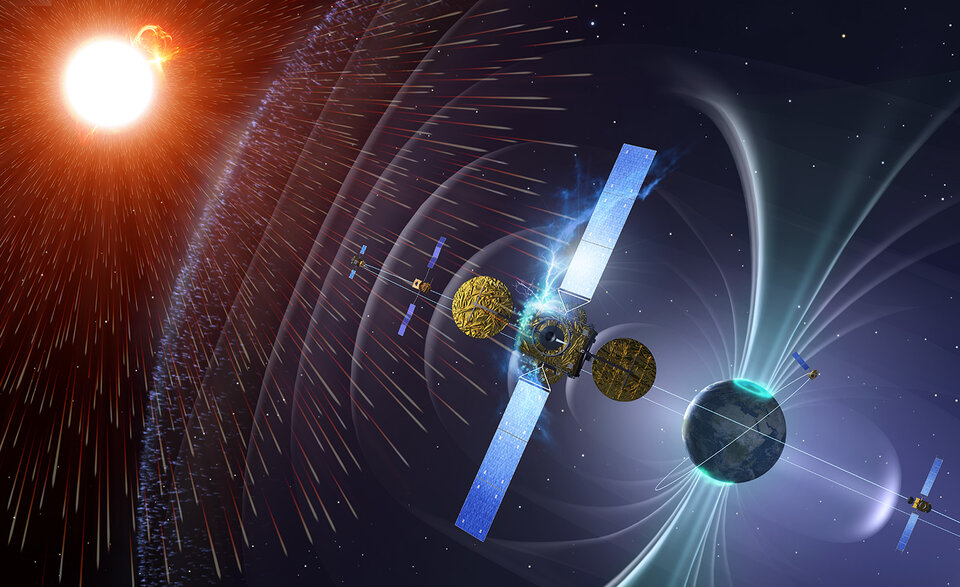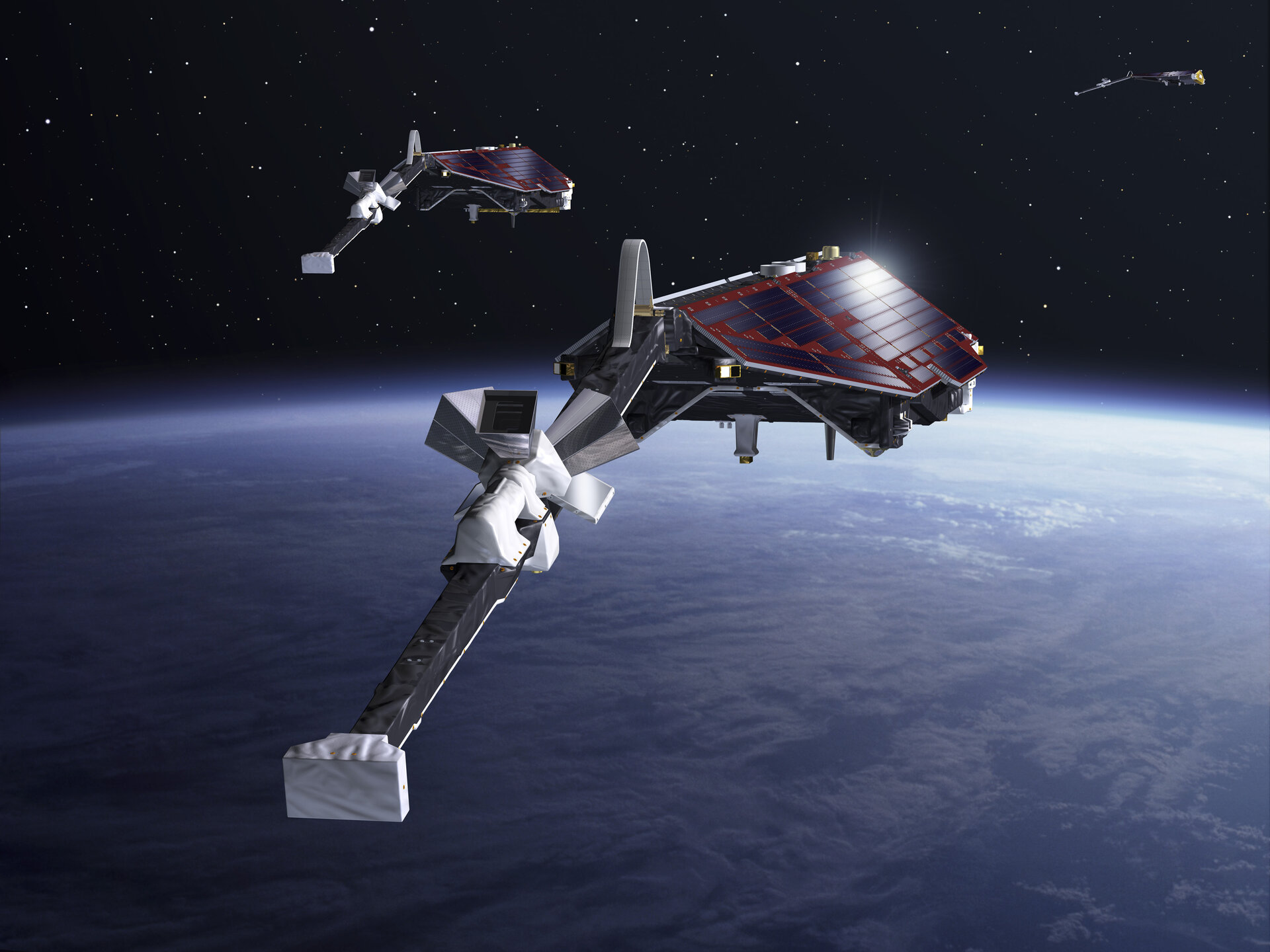Swarm vs. space radiation – the first 10 years
Satellites in orbit can become absentminded. Space radiation randomly flips onboard memory bits, potentially corrupting mission data and functionality. To better understand how this invisible onslaught works in practice, a team systematically analysed how radiation affected the memories of ESA’s three Swarm spacecraft during a decade of mapping Earth’s magnetic field.

The resulting paper, from an ESA and Airbus team, was awarded Best Data Workshop paper at the recent European radiation effects conference, RADECS 2024. Its findings also hold relevance for other missions employing the same mass memory hardware, including Copernicus Sentinel-6, also in Earth orbit, and BepiColombo, headed to Mercury through deep space.
The space beyond Earth is filled with radiation: high-energy particles originating from the Sun, belts of protons, electrons and ions trapped within Earth’s magnetic field and an exotic menagerie of ‘cosmic rays’ – also particles, despite their name – which are shot inwards from far beyond the Solar System.

As these particles traverse through satellite components, they generate transient electric charges which can lead in turn to ‘Single Event Upsets’ – single or multiple memory bit flips – as well as more serious interrupts, ‘stuck-bits’ and ultimately ‘latch-ups’ – a destructive runaway short circuit.
ESA is a leader in the field of radiation effects and mitigation. Experts design in countermeasures such as radiation shielding for key components and ‘error detection and correction’ systems which regularly check for any disruption then put it right.

“Down on Earth’s surface everyday computers are mostly protected from these effects, although big data centres do have to consider them because their sheer scale makes some radiation effects statistically more likely,” explains ESA research fellow Marco Pinto, working in the Agency’s Radiation and Component Reliability Section.
“For space, our work to mitigate these effects is traditionally guided by radiation software tools – such as ESA’s own Spenvis, SPace ENVironment Information System – as well as radiation monitors that are flying on various ESA missions in Earth orbit and beyond, extending for instance to the BERM monitor on BepiColombo and RADEM, flying on the Juice mission to Jupiter.

“The starting point for our work on Swarm came through our looking into other sources of data, in a project called Conrad, for CONtinuous feedback of RADiation effects in flight.
“Single event effects do not typically interfere with normal mission operations, but it turns out they are all logged in the mission raw data. So why not investigate them, to compare them to our pre-mission modelling and see how effective our radiation hardness measures have been in practice?”

Launched in 2013, ESA’s Swarm mission is not one but three identical spacecraft, flying in formation to acquire three-dimensional maps of variations in Earth’s magnetic field. The study focused on three memory components of each satellite’s On-Board Computer, known to be sensitive to radiation effects, but designed to overcome them.
“Swarm proved a good subject for study because its power and temperature levels remained stable throughout the decade under study, and sustained radiation damage on the component materials – known as Total Ionising Dose – remained low throughout. So we could concentrate here on Single Event Upsets throughout the 3327 days under study.”


Access the video
The good news is that the observed error rate turned out to be lower than the pre-flight estimates, although these were based on a worst-case scenario approach.
And the source of these effects appears to differ from current models, with the limited geo-location suggesting the majority of upsets have been triggered by protons encountered within the South Atlantic Anomaly. This is an orbital region possessing higher than usual radiation levels because Earth’s magnetic field dips downward here. The second contribution comes from heavy ions from galactic cosmic rays.


Access the video
“In fact the highest satellite shows far few effects than the others,” adds Marco. “This might be due to part-to-part variability – even in the same batch of components there can always be some variations that might impact performance – or else local non-uniformities in radiation levels.
“What is exciting is we can now apply the lessons learned to the management of Sentinel-6 and BepiColombo, for a start, and we can look into the operational archives of other missions, as a whole new source of data.
“The most challenging part – to really turn the data into well understood information – has been to liaise with the mission operators and check in with the industrial teams that put Swarm together, really working backwards to get a close-up understanding of how the relevant systems work. But the results so far are well worth it!”














 Germany
Germany
 Austria
Austria
 Belgium
Belgium
 Denmark
Denmark
 Spain
Spain
 Estonia
Estonia
 Finland
Finland
 France
France
 Greece
Greece
 Hungary
Hungary
 Ireland
Ireland
 Italy
Italy
 Luxembourg
Luxembourg
 Norway
Norway
 The Netherlands
The Netherlands
 Poland
Poland
 Portugal
Portugal
 Czechia
Czechia
 Romania
Romania
 United Kingdom
United Kingdom
 Slovenia
Slovenia
 Sweden
Sweden
 Switzerland
Switzerland


























